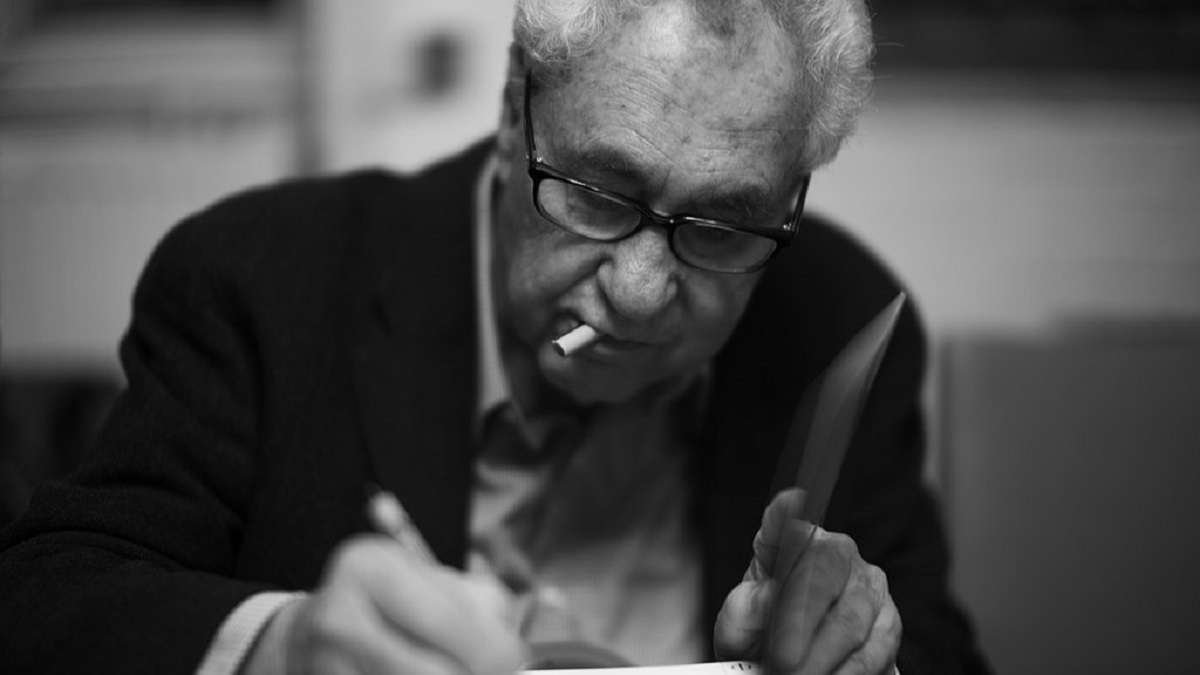
Elliot Erwitt, the widely beloved American photographer whose career spanned more than 70 extraordinarily tumultuous years of 20th-century history, has died.
Among the many achievements Erwitt is famous for is his being the photographer to personally capture more presidents than any other on film, starting with Harry Truman way back during the earliest days of the Cold War.
His family shared the news of his passing through Erwitt’s official Instagram page today, and his daughter confirmed the news to the New York Times
The Instagram post simply summarizes, “We are sad to share that after 95 extraordinary years, Elliott Erwitt has passed away peacefully at home surrounded by family,” He died at his home in Manhattan, New York City on November 29.
Despite being a naturalized American and considered an American photographer, Erwitt was born Elio Romano Erwitt on July 26, 1928, in Paris, France to Jewish-Russian parents who were immigrants from Russia.
The family later moved to Milan, Italy and in 1939 when Erwitt was 10, they emigrated to the United States. This is where Erwitt went on to study photography and filmmaking at Los Angeles City College and other schools.
Oddly, it was in the United States Army, into which he was drafted in 1950, where Elliot Erwitte began to form his photography career.
While working as a photographer’s assistant for the US Army while stationed in his birth country France in 1953, he began to be influenced by the famous photography of legends in the field such as Edward Steichen, Roy Stryker and Robert Capa.
Stryker actually hired Erwitt to work on a photo project for the Standard Oil Company and from this he built up a freelance photography career that included work done for Life Magazine, Collier’s, Look and others.
Later, Robert Capa, founder of Magnum Photos invited Erwitte to join Magnum Photos after taking an interest in his photographic style and compositions.
Aside from being broadly known for his candid black-and-white photos of odd, sometimes humorous and often absurd situations within everyday settings, Erwitte also covered an enormous range of crucial social events.
These notably involved many presidents and included compositions by Erwitt of Richard Nixon’s famous visit to the Soviet Union in 1959 (before Nixon was president), the funeral of John F. Kennedy and many other presidential events over the decades.
This didn’t end later in Erwitt’s life either. He also covered the inauguration of President Barack Obama in 2009.
As happens with many photographers, who capture the private fascinations of their personal lives in interesting new ways through their artistic eye, Erwitt did the same.
In his case, the subject was dogs, and his work with them led to hundreds of photos just of man’s four-legged best friends.
These were released in five amusingly titled books: Son of Bitch (1974), To the Dogs (1992), Dog Dogs (1998), Woof (2005), and Elliott Erwitt’s Dogs (2008)
Erwitt’s tremendously long-lived and prolific photographic work would by itself have been enough to earn him a place among artists, but it wasn’t all that he involved himself in.
His other projects included a filmmaking career that spanned several decades from 1970 to 2009 and resulted in several major creations.
Despite being in his 80s by then, he was also the camera operator in the filming of the Martin Scorcese documentary “Bob Dylan, Nor Direction Home” in 2005.
Of his own work and inspirations, Erwitt explained in a 2022 interview,
“I started by seeing other people’s work. The photographer who was most important to me was the French photographer Henri Cartier-Bresson. I saw a catalog from a show that he had at the Museum of Modern Art. Later, I took some courses at City College, Los Angeles, but I can’t say that I got much out of them. It’s not rocket science, photography,”
Something he always strove toward was spontaneity even while working with dozens of extremely famous celebrities used to posing for carefully calibrated, artificial shots.
Some of those he captured during candid moments were historical figures as varied as Soviet Premier Nikita Khrushchev, Marilyn Monroe and former President Nixon.
One particularly resonant observation by Erwitt, which many photographers could learn from involves the question of time in learning to appreciate your own photos. As he described it,
“You may not even know that you have a good picture unless you take a look. Taking pictures is a response to what you see and what you think you see. And it’s very easy not to respond to the quality of the image you shot until you see it in a different circumstance.”
Aside from his dog photos, Erwitt also published over a dozen others, and his often extremely iconic photos have been included worldwide in artistic collections.
Erwitt is survived by his three daughters, two sons, 10 grandchildren and three great-grandchildren.
Highly Recommended
8 Tools for Photographers
Check out these 8 essential tools to help you succeed as a professional photographer.
Includes limited-time discounts.
Learn more here






